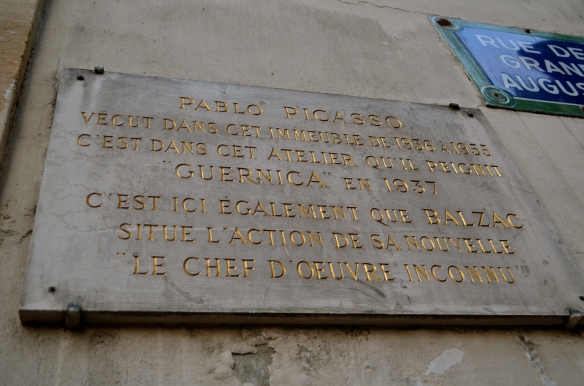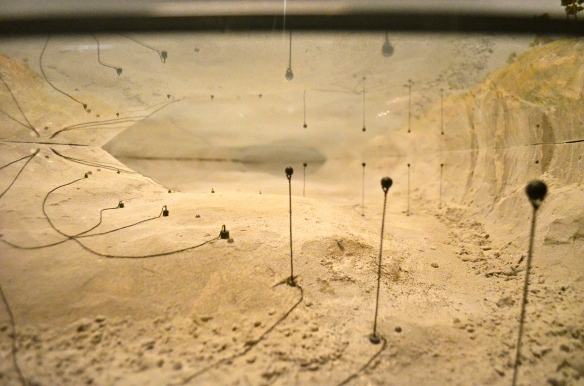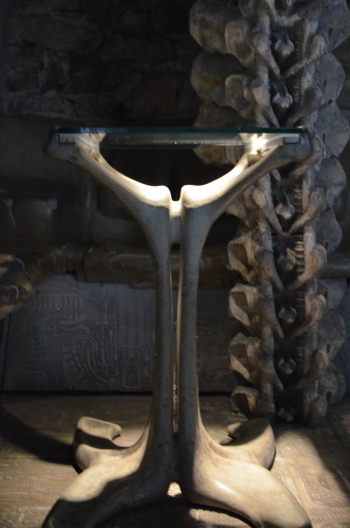Guernica was a sleepy Basque village in northern Spain that was unknown to much of the wider world… until April 27, 1937 when it was the target of the world’s first saturation-bombing raid. General Francisco Franco allowed his fascist ally Hitler to test his new air force’s prowess. At the time, military aviation was in its infancy and the world hadn’t yet seen massive aerial bombings. The raid destroyed the town, causing destruction that previously had been unimaginable.

Ruins of Guernica (1937). The Spanish civil war claimed the lives of over half-a-million people. (Photo credit: Wikipedia)
At the time, Pablo Picasso was living in Paris. When he read the news reports of Guernica, he quit working on other projects and set to work. He worked on it feverishly and within a few weeks, he created a large mural measuring 87.17 meters (286 square feet). When we were in Paris, we were surprised to walk out our door and see this plaque nearby. It says “Pablo Picasso lived in this building from 1936 to 1955. It is in this workshop that he painted ‘Guernica’ in 1937. It is here also that Balzac centered the action of his novel ‘Le Chef-d’œuvre Inconnu‘.”.

Picasso exhibited it at the Spanish Pavilion of the 1937 Paris World’s Fair. It turned out to be a masterpiece and is generally regarded as Picasso’s greatest work. It combines various styles (Cubism, Surrealism and abstraction) to depict and comment on the horrors of war. It wasn’t an immediate smash. But over time, people gained an appreciation of its complex symbolism. People reacted to the humanity depicted and the devastating effects of war on civilians. It became a rallying-cry-in-paint to the anti-fascist cause. When we were in Madrid, we made a special trip to the Reina Sofia Museum to see it. It is incredibly moving and its use of symbolism is astonishing. For a good analysis/explanation of the painting, click here or here.
Happy Birthday Picasso!

































































































